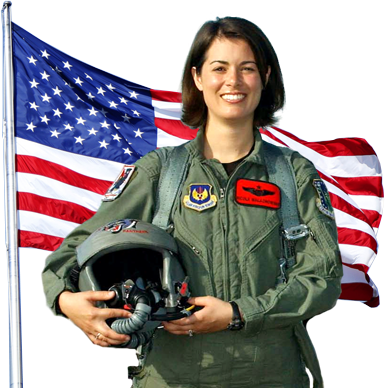- Details
- Hits: 1309
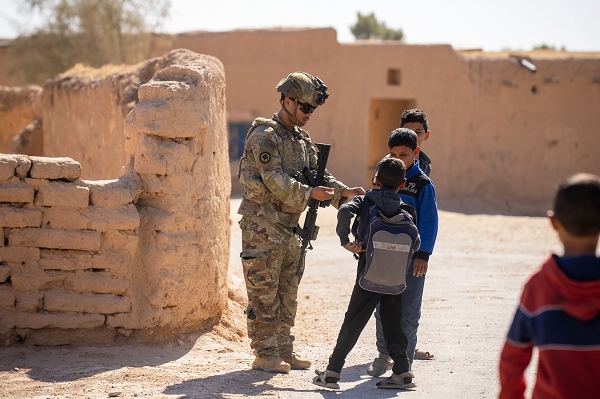
Syria. (November 15, 2024): American forces struck back this week against Iranian-sponsored forces after two recent attacks against U.S. outposts in this war-torn nation. In this photo by Staff Sergeant Emma Scearce, a soldier on dismounted patrol gives candy to children as they pass through a local village. He is one of the approximately 900 U.S. troops in Syria working with local partners to defeat the remnants of the Islamic State group.
The American response came amid a new round of attacks, the second strike on U.S. personnel in two days, consisting of an Unmanned Airial Vehicle (UAV) strike and indirect rocket fire. There were no injuries and little damage was reported. The U.S. response targeted the militia groups’ weapons storage and logistics facilities, according to Central Command.
- Details
- Hits: 1328
“I am a lineman for the county
And I drive the main road
Searching in the sun for another overload.”
Wichita Lineman, by Glen Campbell. 1968 Classic.
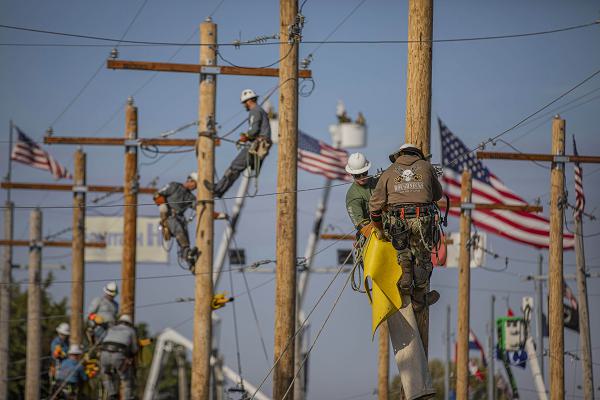
Overland Park, Missouri. (November 7, 2024): This number one hit in 1969 by Glen Campbell (are we dating ourselves) romanticized the lonely electric lineman plying his essential trade, out in the worst weather, struggling to keep the power flowing. In this photo by Sergeant Jason Palacios, Soldiers participate in a lineman's rodeo event to show off their power distribution skills. This forty-year-old Rodeo attracts the best linemen from around the world to compete in various events. Since September 1984, the Rodeo has grown to over three hundred teams and 450 apprentices.
Teams compete in the “hurt man rescue” exercise where teams must “rescue” a one-hundred-and-fifty-pound mannequin from atop a forty-foot pole. Another timed event requires competitors to scale a pole with a raw egg in their mouth. Unfortunately for some, they had to endure the bitter taste on the way down. Apprentices also take a written test that measures their knowledge of basic skills.
- Details
- Hits: 1126
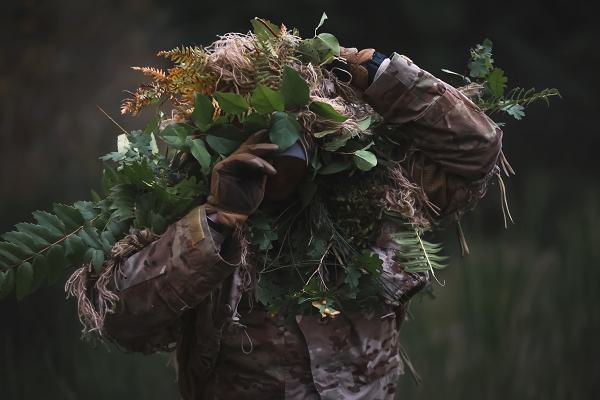
Joint Base Lewis-McChord, Washington. (November 8, 2024): In the movies, they appear like ghosts out of the forest, unseen until they take the critical shot. What viewers don’t see is the hours of grueling training, constant practice, and a strong ability to endure. We ask a lot of our Snipers.
In this photo by Staff Sergeant Adeline Witherspoon, Specialist Drew Topp emerges from the wood line after completing an infiltration mission. During this event, Snipers were dropped at designated grid points and then moved towards observers using natural vegetation to avoid detection. A Sniper is expected to be fit, up to special operations standards, and must be prepared for long, difficult field training. They are expected to be expert infantrymen well-schooled in fieldcraft, escape, and evasion. They must also be an expert in concealment, tactical movement, land navigation and, on top of all that, they must be an excellent marksman!
Of all these skills, the most important attribute of a Sniper is patience. As a Sniper approaches or waits for a target, hours, sometimes days go by before a single shot is taken. A Sniper may lie in uncomfortable conditions for days yet must be ready to execute the mission in an instant.
How does a Sniper maintain such extreme patience?
Websters defines Patience as “the capacity to accept or tolerate delay, trouble, or suffering without getting angry or upset.” Psychologists say it is a “wrestling match” between the body’s natural desire for safety and to avoid pain and the determination of the subject to endure hardship. This “contest” of wills is something every Sniper must win and is often the hardest part of the job.
- Details
- Hits: 2625
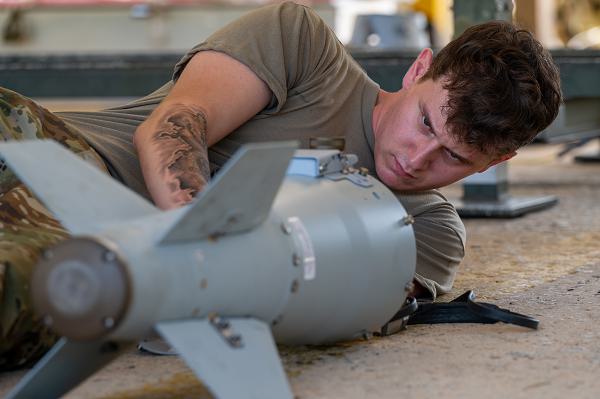
Kadena Air Base, Japan. (November 3, 2024): How do you make a bomb that is as dumb as a rock into a highly targeted, incredibly accurate killing machine? In this photo by Senior Airman Luis E. Rios Calderon, Airmen 1st Class Tanner England, an 18th Munitions Squadron support equipment maintenance technician, readies the wiring on the inside of a joint direct attack munition guidance tail kit component. Once attached, the munition kit turns an ordinary gravity bomb into something quite extraordinary. The Joint Direct Attack Munition (JDAM) converts unguided bombs into smart, precision-guided munitions and was jointly developed by the United States Air Force and United States Navy.
The services wanted to improve bombing accuracy after shortcomings encountered during the Air Force’s bombing campaign during Desert Storm. Laser and infrared imaging were hindered by bad weather conditions, airborne dust, fog, and even cloud cover. The JDAM was meant to overcome these environmental factors to maintain a “lock” on the target.
JDAM kits contain a global positioning system (GPS) and an inertial navigation system (INS) that guides the bomb to its target. Once released from the aircraft, the JDAM autonomously navigates to the designated target coordinates. Target data can be loaded into the aircraft before takeoff, manually altered by the aircrew, or entered by a datalink to change direction even during flight. There are JDAM kits for bombs ranging from 500 to 2,000 pounds.
- Details
- Hits: 3100
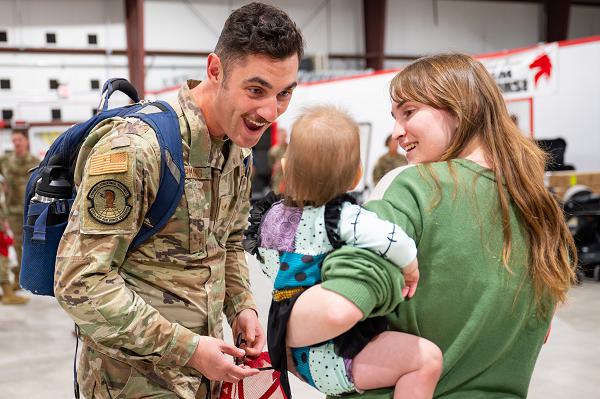
Malmstrom Air Force Base, Montana. (November 1, 2024): In this touching photo by Senior Airman Mary Bowers, Senior Airman Samuel Koopmans, an 819th Rapid Engineer Deployable Heavy Operational Repair Squadron engineer, reunites with his loved ones after returning from Tinian Island. He along with thousands of Airmen have been called back to the Pacific to reopen Tinian, the same airfield that was used in the first and only use of nuclear weapons in war. Members of the 819th RHS returned home from a six-month deployment where they teamed up with U.S. Navy Seabees to assess and prepare the WWI-era Tinian airfield for paving.
Tinian is part of the Commonwealth of the Northern Mariana Islands, an American territory north of Guam and about 1,500 miles east of the Philippines. The remote island is less than 40 square miles across and is one of three sparsely populated islets in the Western Pacific Ocean. Tinian forms the U.S.'s westernmost frontier, along with the major military hub of Guam some one hundred miles to the south. The island is a similar distance to China and other flashpoints in Asia.
- Details
- Hits: 963
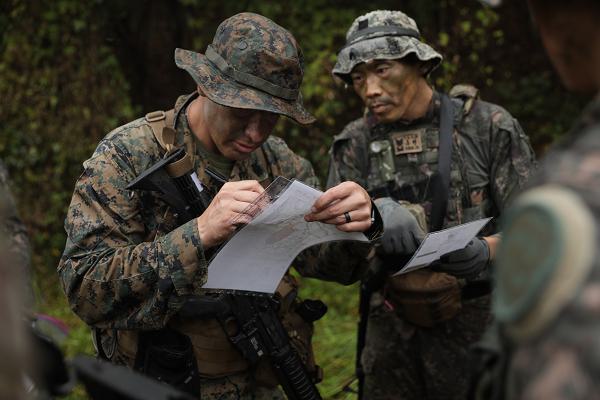
Camp Humphreys, Republic of Korea. (November 5, 2024): In this modern age, our military uses satellites, cell phones, and global positioning systems to find its way around. But what happens when the power goes out, the satellites are gone, and there is no “signal” to be had? In this photo by Staff Sergeant Ian Vega-Cerez, Korean and American Senior Enlisted Leaders plot grid coordinates during the land navigation portion of Mangudai 2024, an annual training event considered one of the toughest in South Korea.
Mangudai exercises reinforce mastery of core Soldiering tasks including live fires, patrol base activities, rendering casualty care under threat of mortar fire, a hand-to-hand combat challenge in a waist deep mud-pit, and miles upon miles of foot-marching through rain and the frigid cold.
But of all the skills put to the test at Mangudai, land navigation stands out because of its demand for accuracy, endurance, and leadership under extreme conditions. While our armed forces certainly take full advantage of today’s navigational technology, a simple and reliable compass-based system is still taught at infantry school.
Before the invention of the magnetic compass, the ancients relied on the sighting of landmarks, the position of celestial bodies, and even the flight path of birds to help guide their way. It was not until the Chinese Han Dynasty in 206 BC that a common fortune telling device was found to be useful as an aid to navigation.


